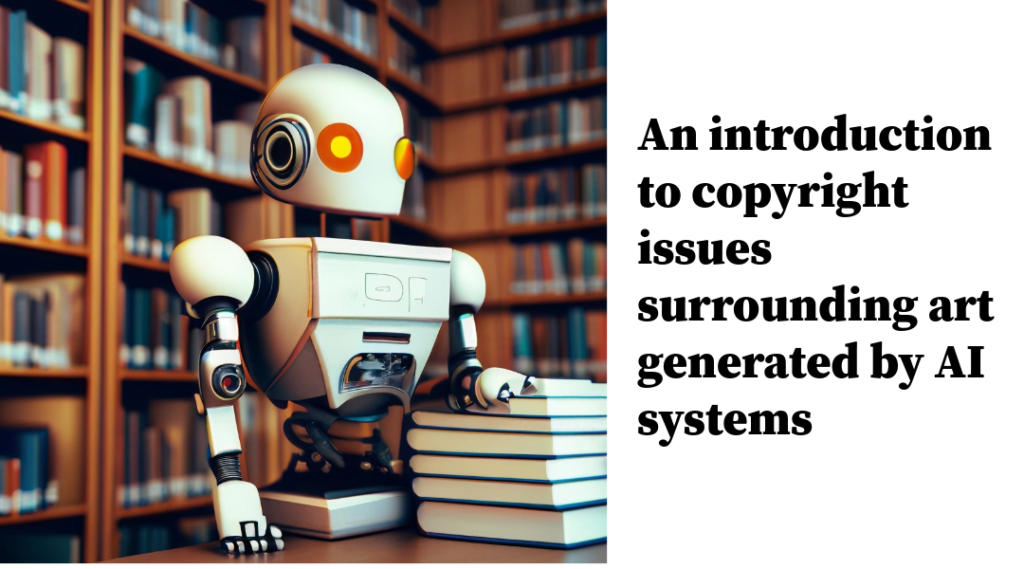Digital art is currently experiencing a tremendous transformation thanks to artificial intelligence (AI). AI technologies play a pivotal role in creative processes. AI art generators are invaluable tools that allow users to quickly create stunning artworks.

Equipped with background removers, these free AI art generators enable individuals to unleash their creativity without financial limitations limiting them. But this democratization of art-making raises complex legal and ethical questions surrounding copyright and ownership in AI-generated art. This extensive blog post addresses these challenges related to AI-generated artwork, providing strategies for effectively managing them within digital creativity’s dynamic ecosystem.
Understanding AI-Generated Art and Copyright
AI-generated art refers to artworks created or heavily influenced by artificial intelligence algorithms trained on existing artwork datasets. AI algorithms have the capacity to generate original compositions or recreate existing artistic styles – even remixing preexisting imagery – but when AI is employed in creative processes such as AI-Generated art, questions of ownership become complex. Copyright ownership typically rests with human creators of artworks; however, with AI-Generated art this cannot be assumed; copyright can often be more complex due to AI’s significant contribution in creative processes compared with conventional art-making processes where copyright typically rests with just humans; something human artists don’t face when producing original compositions, mimicking artistic styles or remixing preexisting imagery from preexisting sources with AI playing an active part in creation process.
Legal Frameworks and Copyright Law
Copyright law in various jurisdictions centers on the principle of originality, offering protection to creative efforts which exhibit sufficient amounts of creativity. When applied to AI-generated art however, delineating how much human involvement must occur before qualifying for copyright protection can present unique difficulties; some advocates recommend attributing authorship directly while others believe the output itself could satisfy originality criteria alone.
AI art generator free tools exacerbate these concerns further, as individuals may use them without fully comprehending their legal implications. Therefore, education regarding copyright Law and intellectual property rights are integral in encouraging responsible engagement with AI-generated art in digital environments.
Ethical Considerations and Attribution
AI-generated art raises ethical considerations beyond legal ones when it comes to copyright and ownership issues. Art world tradition demands crediting original creators; unfortunately distinguishing human contributions versus AI algorithms when creating AI works proves challenging.
Transparency and disclosure are crucial elements in upholding ethical standards in AI-generated art. Artists and creators should inform audiences how much AI was involved with their production process, credit the original creators of datasets or algorithms used, and foster a culture that respects intellectual property rights as well as artistic authorship in digital art communities.
Strategies to Address Copyright Challenges
Responding to the copyright challenges presented by AI-generated art requires collaboration among all relevant parties in developing legal frameworks and guidelines that regulate its usage and attribution, such as updating extant copyright laws to account for advances in AI technology, delineating creator rights/responsibilities/algorithm responsibilities etc.
Educational initiatives play a crucial role in creating awareness about copyright law and intellectual property rights related to AI-generated art. By equipping artists, educators and members of the general population with resources and information regarding best practices regarding copyright rights we can encourage responsible and ethical conduct when creating or disseminating digital artworks.
Collaboration among artists, technologists and legal experts fosters dialogue and provides innovative solutions to copyright challenges encountered when creating AI-generated art. By forging synergies across disciplines we can address these complex issues to ensure AI-generated art continues as an expressive form while protecting all stakeholder interests involved.
Navigating the complex issues related to AI-generated art requires nuanced approaches and collaborative efforts. As AI technology becomes ever more common across creative industries, establishing clear legal and ethical guidelines regarding its usage and attribution is becoming ever more necessary. By prioritizing transparency, education, and collaboration we can foster an environment conducive to responsible digital art communities while protecting creators equally.







Leave a Comment
You must be logged in to post a comment.